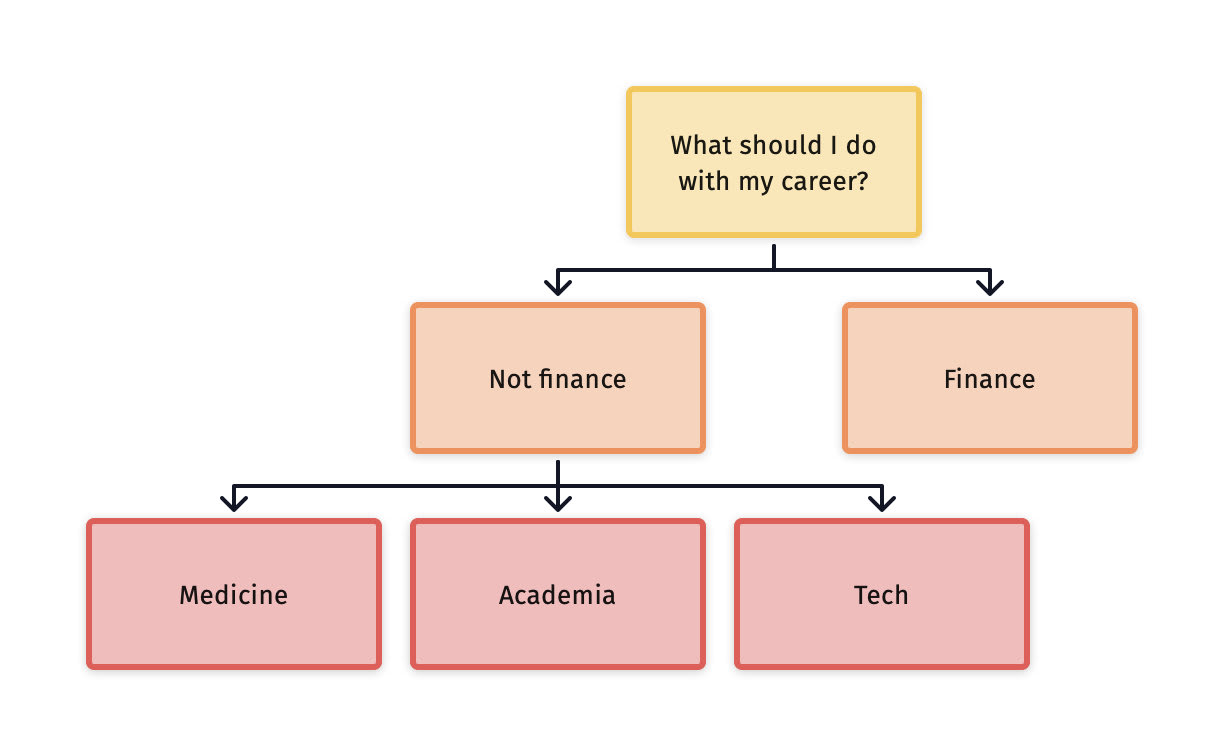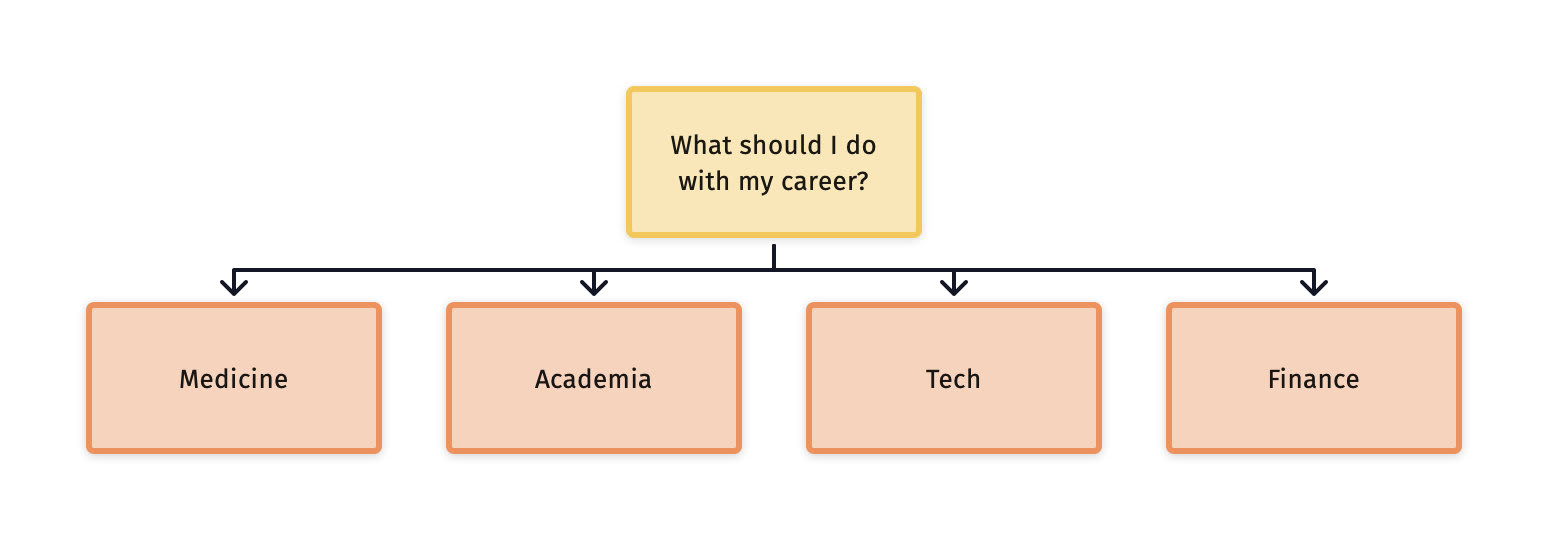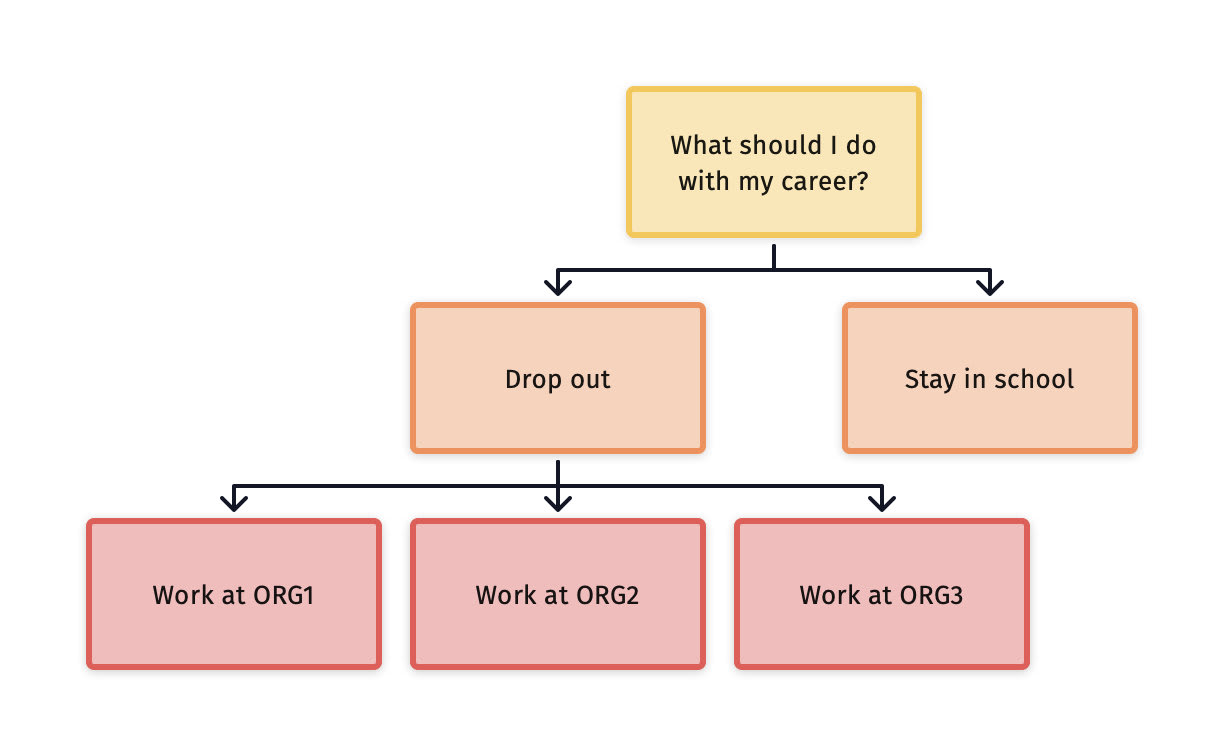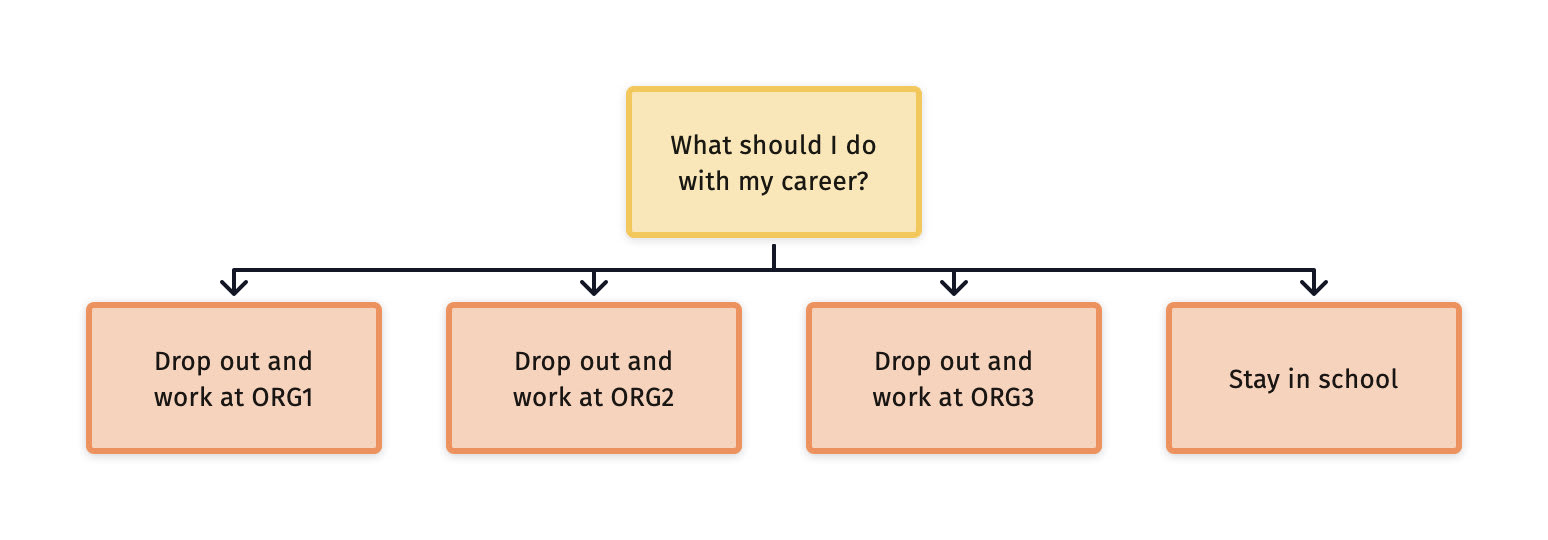This is a linkpost for https://markxu.com/dropping-out
The following career-choice diagram looks silly:

"Go into finance" is a career plan; "Don't go into finance" is the absence of a plan, so it shouldn't be a choice-node. It makes more sense for the diagram to look like:
Similarly, many people seem to implicitly use something like the following career-choice diagram when thinking about school:
However, "don't go to school" isn't a career plan, so it shouldn't be a choice node. The diagram should look more like:




I tend to agree. A lot of people seem to talk about dropping out, but without great ideas about what they would do next.
People quitting to work for an alignment org that deems them useful - I'm in favour of it.
Programmers quitting their jobs to learn about AI safety - hard to have a better safety net than that, so go for it!
But students who are not yet useful enough to be hired, without enough indicators of excellence to suggest they could quickly become a top apprentice, without any particular distaste for the school system, and without any affinity for entrepreneurship? Many such people should stay in the school. If they are interested in academics, or theory, or they need a US visa, then especially so.
I think I disagree with this. School is a very specific, highly-structured environment. Few people actually have the choice between "staying in school or working at Org X". I think the usual choice is between "staying in school" and "figure out what to do with your life in a self-directed way", which I think is a really meaningful choice. It probably involves trialing at some organizations. It probably also involves spending a bunch of time reading.
It indeed is kind of unclear what it means because the person asking the question probably doesn't have much experience being self-directed. I expect if people's diagram looks like the last one you draw, I expect them to make worse decisions than if it looks like the second-to-last one you draw, because the most likely outcome is that they don't work at either ORG1, ORG2, or ORG3, but instead do something quite different.
I think it's important for people to consider plans that look like "change the basic circumstances of my life, then reorient". This post feels like it pushes people to only consider options they already have planned out, which (in my opinion) gets rid of most of the benefit of dropping out of school (which is usually the first time someone in their life is actually capable of fully directing their attention to what they want to do with their life).
I don't really see how the world is different whether or not you use the first or the second representation here? "Drop out and go work at a job" seems like a plan at a higher level of abstraction than "drop out and work in {area}," which is itself at a higher level of abstraction than "drop out and work in {area|position}," which is a higher level of abstraction than "drop out and work at ORG1."
What's the bright line between the first and the second?
One key difference is that "continuing school" usually has a specific mental image attached, whereas "drop out of school" is much vaguer, making them difficult to compare between.
Ah, I see. I guess I kind of buy this, but I don't think it's nearly as cut-and-dry as you argue, or something. Not sure how much this generalizes, but to me "staying in school" has been an option that conceals approximately as many major suboptions as "leaving school." I'd argue that for many people, this is approximately true - that is, people have an idea of where they'd want to work or what they'd want to do given leaving school, but broadly "staying in school" could mean anything from staying on ~exactly the status quo to transferring somewhere in a different country, taking a gap year, etc.
Fun post! Note that you can see the diagrams here https://web.archive.org/web/20220523235545/https://markxu.com/dropping-out
I have taken the liberty of reinstating the images and removing the notice. @Mark Xu, I assume you are okay with this?
yes, thanks!
I think the diagram which differentiates "Stay in school" versus "Drop out" before further splitting actually has some sense. The way I read that split is, it is saying "Stay in school" versus "Do something strange".
In some cases it might be helpful, in abstract, to figure out the pros and cons of staying in school, before recursing down the "Drop out" path. Otherwise, you could imagine a pro/con list for ORGs 1-3 having a lot of repetition: "Not wasting time taking useless required classes" is a pro for all 3, "Losing out on connections / credential" is a con for all 3, etc.